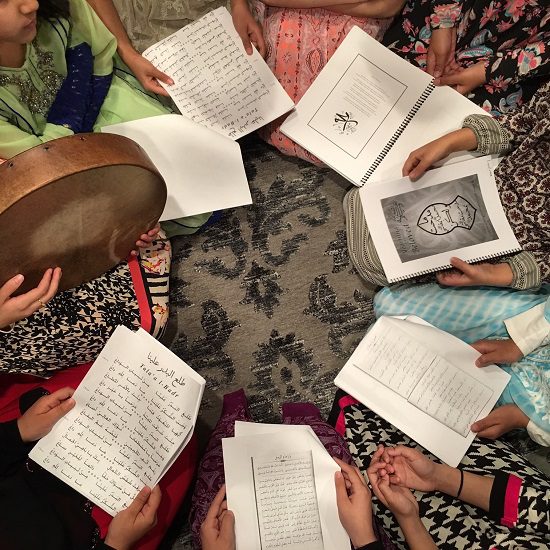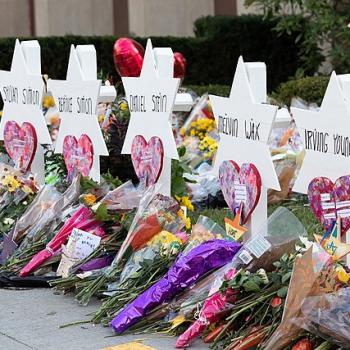 |
|
He is a very bad man. Very, very bad man
|
Women in veils. Praying men. Headscarves and burqas. Mosque and minaret. No other images seem relevant when it comes to portraying Muslims in the mainstream press. This is not to dispute or deny the reality of veils and prayer, but to focus exclusively on such imagery alienates Muslims as strange people with odd habits. It creates a visual shorthand of the “other” designed to cater to what the Western media is used to seeing or what it wants to see. Anything that doesn’t fit is dismissed as a red herring. That is to say, there can be no surprises about how Muslims look and behave.
The subject of the oppressed Muslim woman is a perennial media favorite. She is undoubtedly veiled, usually in all black, and presumed to be out of touch with her sexuality. In other words, a veiled Muslim woman cannot possibly know how to dance like a seductress or pout like a drama queen and even if she did know how, she would probably not be invited to have a chat with Oprah. Oh no. The only Muslim women that interest Oprah are the ones wearing badges of the Oppressed. Not only do they captivate the audience with stories of fleeing from despotic regimes, abusive husbands, heartless homes, they also confirm a cherished belief: the East is irrational and backward, the West is sensible and liberated. Clearly, two different worlds that cannot possibly intersect. Never mind the East/West medley of Muslim women who happen to be Pakistani fashion models, Egyptian soap stars, Iranian parliamentarians, and Syrian engineers. Clearly, a bunch of aberrations, deviations from the norm. Let them stay at home where they belong. Their existence musn’t be publicized, certainly not on Oprah, but what a treat if they were.
When images give way to words, the Muslim world is depicted in a sea of restrictions that conjure in the mind of the average reader a straight jacketed culture, inherently foreign and beyond comprehension. The Sharia says so and so, the Quran demands x or y, the judge issued a fatwa or a stoning or a hundred lashes, the Internet is censored, alcohol is illegal, music and dancing is forbidden, premarital sex is not allowed, etc, etc. The idea that people in every society get around their laws if they have the means is not a consideration. What matters is the imposition of laws and regulations in the Muslim world. It is no wonder that this world is such an anomaly, seemingly disconnected from the rest of humanity. The question arises and justifiably so, what makes these Muslims tick?
Just when an answer appeared fertile in a film, it went awry with the offhanded title of “Looking for Comedy in the Muslim world”. The hopeful premise of Albert Brooks’ latest feature falters in the problematic term “Muslim world”. Would you ever hear of a film that is searching for sarcasm in the Jewish world or the Christian world? Why single out Muslim? Why not just title the film “Looking for Comedy in South Asia” which would be far more accurate but not as sensational. And sensation is, after all, what the Muslim world all about.
All cultures need markers in order to be differentiated. But to insist on labeling one culture in deference to others is not a level playing field. An NPR news bite that started with “Muslims attacked Christians in Nigeria” brought this issue home. I argued about it with my husband who said the story was just factual and there was no other way to state what happened. My point had nothing to do with stating the facts, but the disparity in reporting styles that would probably not say things like “Jewish soldiers attacked Palestinians in the Occupied Territories” or “Christian fundamentalists vandalized homes in rural Mississippi”. In the case of Muslims behaving badly, they are sure to be mentioned with a capital M.
It is a sad irony that only after 9/11 did the Western media develop a keen interest in Islamic culture. But the pitfalls of dealing with any culture in this globalized arena cannot be reduced to stereotypes, whether deliberate or otherwise. Caricatures of Muslims should not reach the extent that veiling and praying become the only attributes of our identity. And despite all evidence to the contrary, Muslims are shown as the only people on the planet engaging in violence. Of course, the media cannot and should not ignore what is going on in Muslim countries, what is ugly and real, from an angry mob rioting over cartoons to a married woman imprisoned or murdered for having an affair. All that is required is more balance, but balance seems an unlikely possibility when an illustration of the Prophet Mohammad with a bomb in his turban is considered fair play in broaching the troubled side of Muslim societies.
The controversy is not really about freedom of the press or cultural relativism or even about the classical Islamic taboo against religious imagery. It’s about making distinctions between fact and fiction and not allowing fiction to stand for fact. In my mind, the erroneous image of the Prophet with a turban bomb is akin to portraying Jesus with a pistol in his hand. Will Christian tolerance prevail for the sake of art? Maybe, maybe not. Let’s just presume for arguments sake that I had been one of the artists commissioned by the Dutch newspaper and let’s just keep the fantasy going by endowing me with drawing skills. In that fantastical case, I would have drawn two women locked in arm wrestling, one with her head covered, one without. It may not be thought provoking stuff, but at least it would have complied with the professed goal of challenging what can and cannot be said about Islam in the Western media without resorting to cheap insults.
Be my guest. Say what you want. But when you say something, do try to be balanced because the need for it is imperative. Evening out the negatives with some positives will humanize Muslims. If we are shown as everyday people worrying about everyday problems such as job security or medical bills or how to finance our kids education, or in the case of the kid, agonizing over that stubborn pimple and scoring tickets to the sold out U2 concert, perhaps then we are more than just our tiresome Muslim selves. Maybe all that we are, all that we can ever be, are just ordinary folks trying to live our lives. Now that would be a relief.
Imagine a family glued to the TV screen. They are not watching the evening news with sober expressions. They are chuckling aloud as George puts on oven mitts to protect his hands, here comes Jerry in that puffy white shirt and Kramer’s low talker friend flies into a rage. My Mom can’t get enough of Kramer. She uses the edge of her headscarf to wipe tears of laughter and talks to the K man from a living room in Seattle. Oh Kramer, Kramer, you’re such a nutcase! (translated from Urdu). Dad tells her to be quiet. He has practically memorized all the dialogue but still he likes to listen and cracks up at the same old punch lines. I think George amuses him the most, right up there with Elaine’s old boss, the eccentric J. Peterman with his funky catalog. Yes indeed. My devout Indian Muslim parents love Seinfeld. It’s almost an addiction for them to watch reruns after dinner while sipping chai and munching apples. As for prayers, they will prostrate before Allah right after the commercial break.
Maliha Masood is the author of the forthcoming travel memoir In the Middle of the East. She lives in Seattle, WA.











